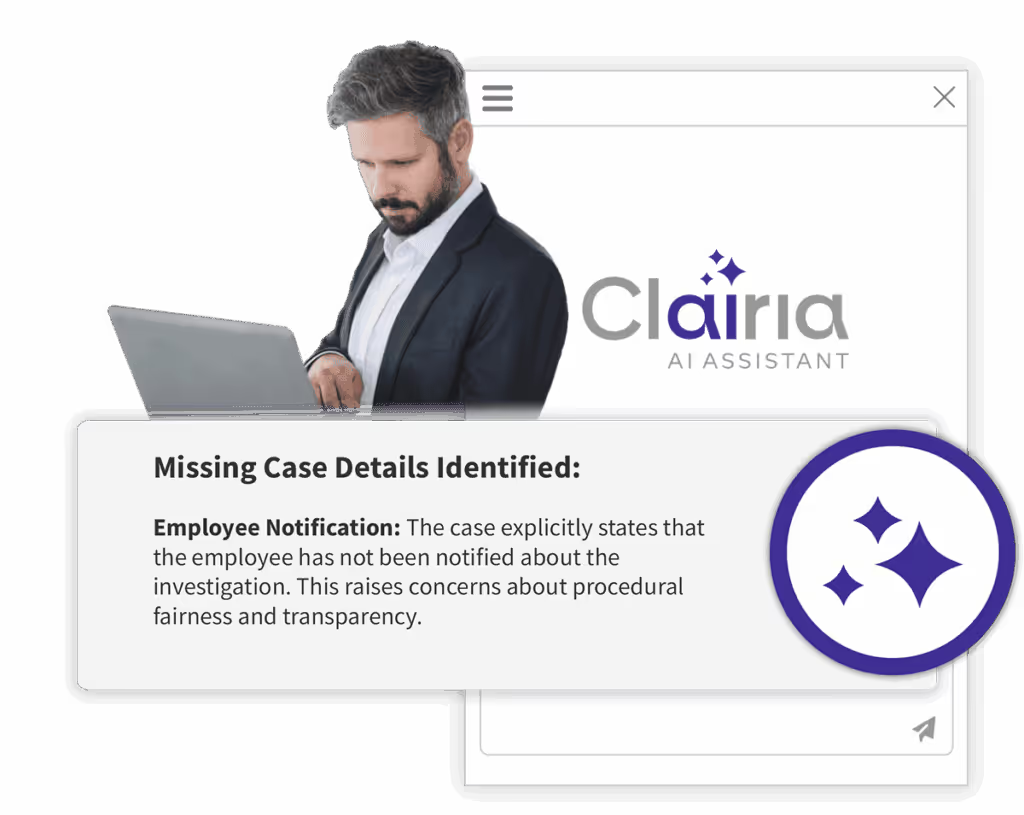The Consumer Financial Protection Bureau (CFPB) is the federal agency tasked with protecting consumers in the financial industry. The CFPB, which receives direct funding from the Federal Reserve, is not an organization to be taken lightly.In its quest to eradicate potentially unfair, deceptive, or abusive acts or practices (UDAAP) that violate the Consumer Financial Protection Act, the CFPB has broad power to examine the practices of both banks and non-banks. And while banks, thrifts, and credit unions with more than $10 billion in assets fall directly under CFPB regulations, any provider of consumer financial products and services, or their service providers, are within its reach.
See How Case IQ Can Help
Better compliance, happier customers.
Case management software helps companies comply with CFPB by making it easier to record, address, and manage customer complaints.
Learn MoreWhat Does the CFPB Do?
The CFPB administers the following federal statutes:
It also takes on responsibilities for consumer financial protection, mandated by the Dodd-Frank Act, including:
- Helping consumers make informed and responsible financial decisions
- Protecting consumers from harmful practices
- Eliminating outdated and unnecessary regulations
- Promoting fair competition through consistent law enforcement
- Increasing market transparency
How Much Power does the CFPB Have?
The CFPB “is authorized to conduct investigations before instituting judicial or administrative adjudicatory proceedings under Federal consumer financial law,” according to its website.
It can also “issue investigational subpoenas known as civil investigative demands (CIDs) when looking into potential violations of law. A CID may demand, among other things, documents, emails, reports, answers to written questions, and oral testimony. Each CID is required to state the nature of the conduct constituting the alleged violation which is under investigation and the provision of law applicable to such violation."
In addition, the CFPB may initiate actions for civil penalties, or an injunction and it may refer potential criminal issues to the Department of Justice.
RELATED: What is Complaint Tracking Software?
CFPBs Requirements
Complying with CFPB regulations has become an important activity for financial service providers and their vendors. The CFPB has created a database so that consumers can file a complaint with the bureau directly and know that something will be done.
Financial institutions are required to comply with the regulations of the CFPB, including those for customer complaint handling. CFPB guidelines include that financial institutions handle customer service complaints by:
- Recording every complaint that is received
- Categorizing each complaint so it's easier to track and assess areas of risk
- Addressing each complaint and escalating those which involve legal issues
Complaints Database & CFPB Complaint Timeline
In addition, the Bureau has set up its own complaints portal that any consumer can access to file a complaint against a financial service provider. As a result, service providers should ensure that their own complaints management systems are serving the needs of customers to avoid becoming a line item in the CFPB consumer complaint database.
When consumers file a complaint with the CFPB, whether it’s regarding credit cards, debt collection, loans, or something else, there are additional regulations that apply. The CFPB will communicate with the financial institution that has received the complaint regarding next steps. This could also involve sending the complaint to another agency that’s more suited to handle it.
In the CFPB complaint process, the company in question then has 15 days to submit an initial response to the CFPB detailing how it will address the complaint. In some cases, the institution can take up to 60 days to provide a final response if they tell the complainant they’re working on it. Of all the complaints that the CFPB receives, 97 percent are sent to the financial service provider in question for an appropriate response within the recommended CFPB complaint response time of 60 days.
Free Webinar
Want to avoid the middleman? You need a hotline.
Learn how WhistleBlower Security’s hotline system pairs perfectly with Case IQ’s modern case management software in our free webinar.
Watch the Webinar2023 Trends in Banking Complaints
During the 2023 reporting year, the CFPB received over 1.2 million complaints. Of these, the largest product category, with 644,839 complaints, is the “credit reporting, credit repair services, or other personal consumer reports” category. Credit reporting made up 99 percent of these consumer complaints. The lowest number of complaints fell under the “debt or credit management” product category, with just 466 complaints.The most reported issue in the CFPB consumer complaint database was “incorrect information on [the consumer’s] report, with over 443,000 complaints. With 332,660 reports, “incorrect use of [their] report” came in second place in the issue categories.Even if your institution doesn’t offer these services, be warned: other common financial services and products such as issues with checking accounts or mortgages and credit card complaints received tens of thousands of consumer reports last year. If you don’t want to make headlines (or even deal with a regulatory body), put the customer’s needs first and strive to operate ethically.
CFPB Compliance: A Four-Step Process
With so much power, it’s not surprising that financial institutions are scrambling to ensure they comply with CFPB regulations before they become the subject of an audit.Not only is customer complaint handling important from a business standpoint, but it is also important from a legal one. Companies in the financial services industry must follow the customer complaint handling regulations set forth by the CFPB to avoid bad press, financial pressures, and internal stress.It is important that those who handle the customer complaints within the company be up to speed with the regulations, have a compliance program in place, and act on it accordingly. Once this happens your customer service will not only be addressing your customer needs, but it will also ensure you are compliant with the government.The resulting changes in customer service and complaints management will provide financial institutions with an opportunity to improve their relationships with consumers on every level.
Step One: Devote Resources
You can’t expect to improve your compliance without putting some budget and employees behind it.“First, company leadership should devote adequate resources to the compliance program, which will greatly increase the chance of catching and fixing any errors that may occur,” says Braden Perry, a partner in the Kansas City-based law firm of Kennyhertz Perry, LLC.
Step Two: Appoint CCO
Once the resources are established, a senior management level Chief Compliance Officer should be appointed, says Perry. Having a CCO who gives regular reports to top-level staff is vital to ensure the proper oversight of the CFPB compliance functions.This also keeps the entire organization on the same page. Compliance doesn’t happen in a vacuum; it ties in with many other departments. The CCO can help make a culture of compliance where everyone works together toward meeting regulatory requirements as part of their daily procedures.
Free eBook
Need help instilling compliance into your internal culture?
Download our free white paper to learn how to assess and update your organization for better compliance.
Download the eBookStep Three: Create a Complaint System
“Third, a robust customer complaint system to handle any complaints that consumers may have about your business will alleviate issues before they arise,” says Perry. The customer complaint system can take many forms, but it should provide a clear and simple way for customers to reach the company and for complaints to be heard, tracked, and resolved.Case IQ now offers a top-tier reporting hotline to its users, courtesy of WhistleBlower Security. With support offered in over 150 languages and calls answered in 30 seconds, customers are empowered to voice their concerns, building a sense of trust. Learn more here.
Step Four: Arrange Independent Compliance Audits
And finally, Perry recommends arranging independent compliance audits of the company either by a third party or someone who is not actively involved in the CFPB compliance management system. This vital step allows management to get a third-party view of the compliance landscape and adds credibility to the program.
The Benefits of Compliance
Compliance isn’t always easy or fun, but it comes with benefits aside from simply avoiding penalties. Rather than see this third party as an intrusion, change your thinking and welcome the ways that the CFPB rules can help to improve relationships with your customers.The fact that it will help to streamline complaints and ensure they are investigated and addressed means a better experience for the customer. Rather than sweeping customer complaints under the rug or ignoring them, financial service providers have extra incentive to ensure customer complaints are addressed.When the customer has a better experience, it also works to your advantage, too. They will be more likely to do business with your institution again, as well as help you maintain a favorable reputation.Here are several ways complying with CFPB rules can help to improve these customer relationships:
- Ensure Focus: The CFPB has created a system that gets financial institutions to focus on the customer complaint at hand. None can be overlooked. Every complaint received will be addressed. This is good for the customer and the business because it means the issue must be addressed in a timely manner.
- Provide Mediation:The CFPB’s ombudsman brings a neutral party to the issue. They will hear the details from both sides and can help you come to a solution that makes both parties comfortable and satisfied.
- Strive for Efficiency:It is always important to investigate and address customer complaints in a timely and efficient manner. The CFPB helps to make sure this happens. When a complaint is logged, they provide the financial institution with a limited amount of time to respond.
- Offer Guidance: The CFPB provides information on their site that will help to answer consumer questions, with topics including credit cards, mortgages, school loans, and more. Because of this helpful information offered by the CFPB, customers might not need to submit a formal complaint.
How Case IQ Can Help
Case IQ’s modern case management software can help you manage customer complaints and improve your CFPB compliance all in one secure, centralized platform. Our easy-to-use hotline gives customers a place to report issues if they want to go directly to your company. After intake, a case is automatically created and assigned in the platform, so you can reduce resolution times. Finally, our award-winning BI tools show complaint trends, so you know where to focus your employee training and resources. Read more about how Case IQ can reduce your organizational risk here.
FAQ's
What is CFPB?
The Consumer Financial Protection Bureau (CFPB) is a U.S. government agency that oversees financial products and services to protect consumers from unfair, deceptive, or abusive practices. It was created in response to the 2008 financial crisis as part of the Dodd-Frank Act.
What is CFPB regulation?
CFPB bank complaint regulation involves overseeing consumer protection in the financial industry to eliminate potentially unfair, deceptive, or abusive acts or practices (UDAAP) that violate federal consumer financial laws.
What does CFPB regulate?
The CFPB regulates financial services and products to protect consumers from unfair, deceptive, and/or abusive business practices.
What are the 5 types of federal consumer financial protection laws and regulations?
The five types of federal consumer financial protection laws and regulations administered by the CFPB include the Truth in Lending Act, Fair Credit Reporting Act, Real Estate Settlement Procedures Act, Equal Credit Opportunity Act, and Home Mortgage Disclosure Act.
What are the 3 main fair lending regulations?
The three main fair lending regulations enforced by the CFPB are the Equal Credit Opportunity Act, Home Mortgage Disclosure Act, and Fair Housing Act.











